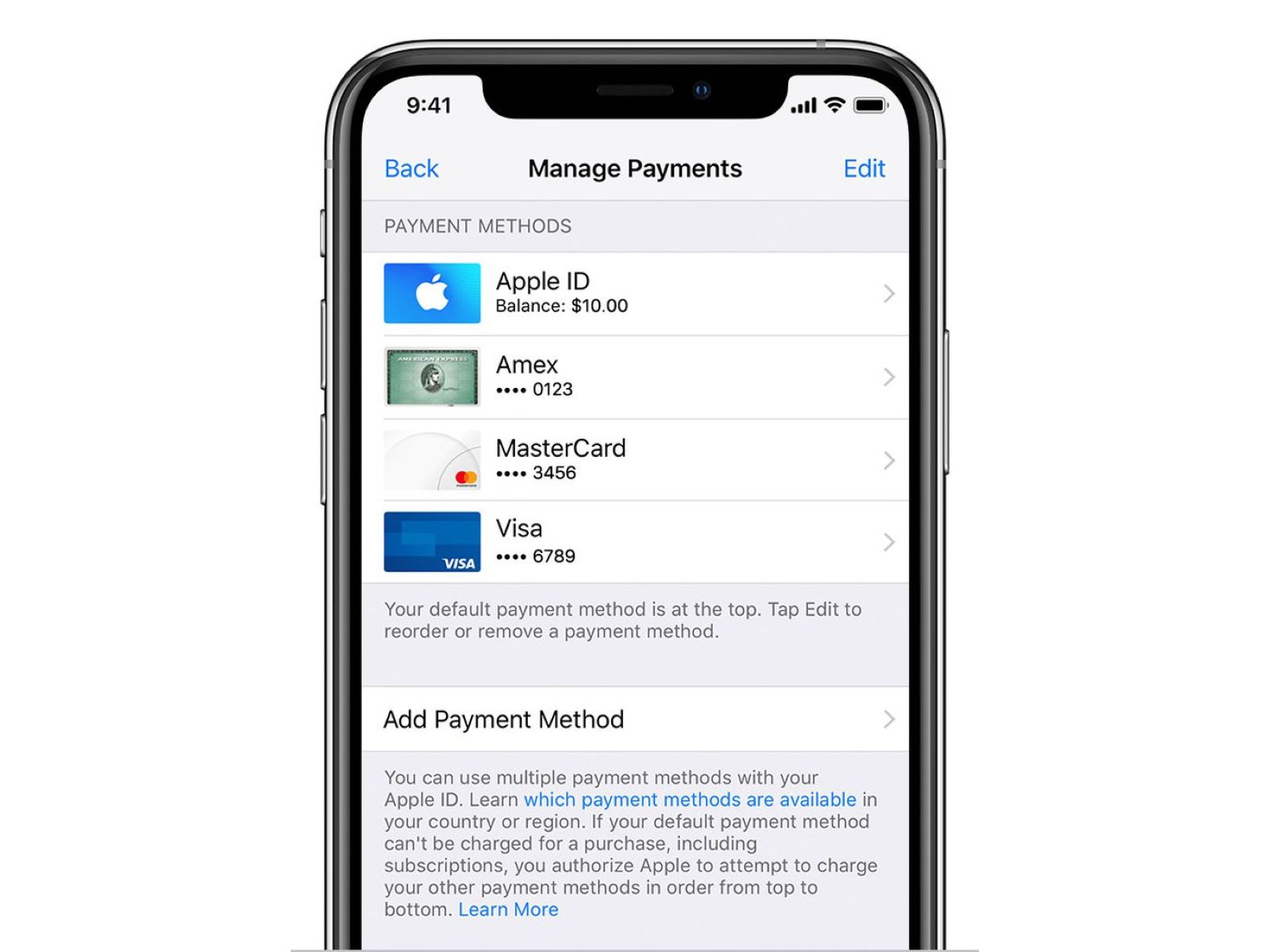

Finance
How To Get A Foreclosure Off Your Credit
Published: January 4, 2024
Learn effective strategies to remove a foreclosure from your credit score with our finance guide. Regain financial stability and improve your creditworthiness.
(Many of the links in this article redirect to a specific reviewed product. Your purchase of these products through affiliate links helps to generate commission for LiveWell, at no extra cost. Learn more)
Table of Contents
Introduction
Facing a foreclosure can be a challenging and stressful experience. Not only does it signify the loss of a home, but it can also have a significant impact on your credit score. Having a foreclosure on your credit report can make it difficult to secure new loans or credit in the future.
If you find yourself in this situation, it’s important to understand that all hope is not lost. There are steps you can take to minimize the impact of a foreclosure on your credit and even potentially remove it from your credit report.
In this article, we’ll delve into the process of getting a foreclosure off your credit and provide you with practical advice on how to rebuild your credit after experiencing this financial setback. Keep in mind that each individual’s situation is unique, and there are no guarantees that these strategies will work for everyone. However, with dedication and persistence, you can make positive changes to your credit profile.
So, let’s dive deep into the world of foreclosure and credit, and explore the steps you can take to improve your financial standing.
Understanding Foreclosure and its Impact on Credit
Before we can discuss how to remove a foreclosure from your credit, it’s important to understand what foreclosure is and how it affects your credit score.
Foreclosure is a legal process in which a lender seizes and sells a property when the borrower fails to make mortgage payments. This can happen due to various reasons such as job loss, financial hardships, or unexpected circumstances.
One of the most significant impacts of foreclosure is on your credit score. Your credit score is a numerical representation of your creditworthiness, and it plays a crucial role in determining your ability to secure loans or credit in the future.
When a foreclosure is reported on your credit report, it can lead to a significant drop in your credit score. The exact impact depends on factors such as your previous credit history, the length of delinquency, and the amount owed.
A foreclosure can remain on your credit report for up to seven years, making it challenging to obtain new credit or loans during this time. It can also affect your ability to rent a home or even get a job as employers often check credit reports as part of the hiring process.
It’s important to note that foreclosure is not the only negative item that can affect your credit. Late payments, collections, and judgments can also have a detrimental impact on your credit score. However, a foreclosure generally carries more weight and can be seen as a more severe derogatory mark.
Now that we have a better understanding of what foreclosure is and its impact on credit, let’s explore the steps you can take to improve your credit profile and potentially remove the foreclosure from your credit report.
Review Your Credit Report
When it comes to dealing with a foreclosure on your credit, the first step is to thoroughly review your credit report. Your credit report contains information about your credit history, including accounts, payments, and any negative items like foreclosures.
Request a copy of your credit report from all three major credit bureaus: Experian, TransUnion, and Equifax. You are entitled to one free credit report from each bureau every year, which can be accessed through annualcreditreport.com.
Once you have obtained your credit reports, carefully analyze them for any errors or inaccuracies. It’s not uncommon for credit reports to contain mistakes that can negatively impact your credit score. Look for incorrect dates, account balances, or any accounts that were not opened by you.
If you find any errors, it’s important to dispute them with the credit bureaus. You can do this by submitting a dispute letter or by disputing the errors online through the credit bureau’s website. Provide supporting documents to strengthen your case, such as payment receipts or any other relevant information.
The credit bureau has 30 days to investigate your dispute and make any necessary corrections. If they find in your favor, the foreclosure may be removed from your credit report, resulting in an improvement in your credit score.
It’s crucial to review your credit report regularly, even after disputing any errors. By staying on top of your credit report, you can monitor your progress and ensure that your credit profile is accurate and up to date.
Next, let’s explore how you can rebuild your credit after a foreclosure and improve your overall financial situation.
Dispute Errors on Your Credit Report
Disputing errors on your credit report is a crucial step in getting a foreclosure off your credit. As mentioned earlier, inaccuracies on your credit report can have a negative impact on your credit score. By identifying and disputing these errors, you can improve your chances of removing the foreclosure from your credit report.
Here’s how you can effectively dispute errors on your credit report:
- Obtain copies of your credit reports: Request a copy of your credit report from each of the three major credit bureaus – Experian, TransUnion, and Equifax. Carefully review each report to identify any discrepancies or inaccuracies.
- Identify errors: Look for any incorrect information related to the foreclosure, such as incorrect dates, amounts owed, or even accounts that don’t belong to you. Keep a record of these errors, as you will need to provide evidence when disputing them.
- Prepare your dispute: Write a detailed dispute letter to the credit bureau(s) that issued the inaccurate report. Explain the error clearly and concisely, providing supporting documentation such as payment records or correspondence with the lender. Clearly state your request for the removal of the foreclosure from your credit report.
- Submit your dispute: Send your dispute letter, along with the supporting documents, to the credit bureau(s) via certified mail with a return receipt requested. This will ensure that you have proof of delivery and can track the progress of your dispute.
- Follow up on your dispute: The credit bureau(s) has 30 days to investigate your dispute and respond to your request. Keep track of the timeline and follow up if you haven’t received a response within the specified timeframe. If the credit bureau finds in your favor, they will update your credit report by removing the foreclosure, which will positively impact your credit score.
- Monitor your credit report: After disputing errors, it’s essential to monitor your credit report regularly. Check for any updates or changes and ensure that the foreclosure has been properly removed. If you notice any discrepancies, follow up with the credit bureau(s) to rectify the situation.
Remember, the process of disputing errors on your credit report may take time and persistence. However, it is a necessary step in the journey to remove a foreclosure from your credit and rebuild your financial standing.
Next, let’s explore how you can proactively rebuild your credit after experiencing a foreclosure.
Rebuild Your Credit
Rebuilding your credit after a foreclosure is crucial to improving your financial situation. While it may take time and patience, implementing the following strategies can help you rebuild your credit:
- Create a budget: Start by creating a budget that outlines your income, expenses, and debt obligations. This will help you manage your finances more effectively and ensure that you can make timely payments towards your outstanding debts.
- Make timely payments: One of the most important factors in rebuilding your credit is making consistent, on-time payments towards your debts. Pay all of your bills, such as credit cards, loans, and utilities, on or before their due dates. This will demonstrate your financial responsibility and improve your creditworthiness.
- Pay off existing debts: Prioritize paying off any existing debts, including credit card balances, personal loans, or other outstanding obligations. Consider implementing the debt snowball or debt avalanche method to pay off your debts more efficiently.
- Establish a new credit history: If you don’t have any active credit accounts, consider opening a secured credit card or becoming an authorized user on someone else’s credit card. Use these accounts responsibly by making small purchases and paying them off in full every month. This will help you establish a positive credit history.
- Keep credit utilization low: Keep your credit card balances low in relation to your available credit. Aim to keep your credit utilization ratio below 30% to demonstrate responsible credit management.
- Apply for new credit cautiously: As you work on rebuilding your credit, be cautious when applying for new credit. Multiple credit inquiries can negatively impact your credit score. Only apply for credit when necessary.
- Build a positive payment history: Consistently making on-time payments over an extended period will gradually improve your credit score. Focus on maintaining a positive payment history to demonstrate your creditworthiness.
- Monitor your credit: Regularly check your credit reports to ensure that they are accurate and up-to-date. You can also sign up for credit monitoring services or use free credit monitoring apps to receive alerts about any changes to your credit profile.
- Seek professional assistance: If you feel overwhelmed or uncertain about how to effectively rebuild your credit, consider seeking assistance from a reputable credit counseling agency. They can provide guidance and help you create a personalized plan to improve your credit score.
Remember, rebuilding your credit after a foreclosure is a gradual process. Stay committed to your financial goals, and over time, you will see improvements in your credit score and financial standing.
Finally, let’s conclude our discussion on getting a foreclosure off your credit and summarize the key points.
Seek Professional Assistance
Seeking professional assistance can be beneficial when dealing with a foreclosure on your credit. Credit repair companies and credit counseling agencies can provide expert guidance and support to help you navigate the complex process of removing a foreclosure from your credit report and rebuilding your credit.
Here are a few ways in which professional assistance can be helpful:
- Credit Repair Companies: Consider working with a reputable credit repair company that specializes in helping individuals improve their credit. These companies have extensive knowledge and experience in dealing with credit bureaus and can help identify any errors on your credit report, dispute them on your behalf, and guide you through the process of improving your credit score.
- Credit Counseling Agencies: Credit counseling agencies provide valuable resources and support for individuals struggling with their finances. They can help you create a personalized budget, negotiate with creditors, and provide financial education to help you make informed decisions about your credit and overall financial health.
- Legal Advice: In some cases, seeking legal advice may be necessary, especially if you believe that your foreclosure was unjust or if you are facing other legal challenges related to your credit. An attorney specializing in consumer rights or foreclosure law can provide valuable insights and guidance throughout the process.
When seeking professional assistance, it’s important to do thorough research and choose a reputable and trustworthy service provider. Look for organizations accredited by reputable industry associations, such as the National Foundation for Credit Counseling (NFCC) or the Better Business Bureau (BBB).
Keep in mind that professional assistance does come with associated costs, so be sure to understand the fees and services provided before committing to any agreements.
Professional assistance can be especially helpful if you feel overwhelmed or uncertain about the best course of action to improve your credit. They can provide knowledgeable guidance, save you time and effort, and increase your chances of successfully removing a foreclosure from your credit report.
Finally, let’s wrap up our discussion on getting a foreclosure off your credit and conclude with some key takeaways.
Conclusion
Dealing with a foreclosure on your credit can be a challenging and overwhelming experience. However, by taking proactive steps and being diligent in your efforts, you can minimize the impact of a foreclosure and work towards improving your credit score.
Remember, the first step in this process is to carefully review your credit report and identify any errors or inaccuracies. Disputing these errors with the credit bureaus can lead to the removal of the foreclosure from your credit report, providing a positive boost to your credit score.
Rebuilding your credit after a foreclosure requires a combination of responsible financial management and patience. Focus on making timely payments, paying off existing debts, and establishing positive credit habits. This includes keeping credit utilization low, applying for new credit cautiously, and striving to build a positive payment history.
Seeking professional assistance from credit repair companies or credit counseling agencies can provide additional support and guidance throughout this process. They can help you navigate the complexities of credit repair, negotiate with creditors, and provide you with valuable financial education.
Remember that improving your credit takes time and persistence. Stay committed to your financial goals, monitor your credit reports regularly, and remain patient as you work towards rebuilding your credit after a foreclosure.
By following these steps and staying proactive, you can ultimately remove a foreclosure from your credit report and regain your financial health. With a fresh start, you can move forward on a stronger foundation and work towards achieving your financial goals.














